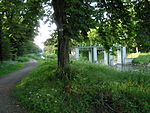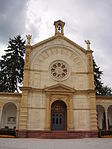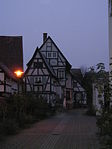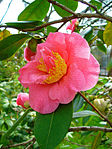European School, Karlsruhe
1962 establishments in West GermanyEducation in KarlsruheEducational institutions established in 1962European SchoolsSchools in Baden-Württemberg ... and 1 more
Use British English from June 2020

The European School, Karlsruhe, commonly known as ESK, is one of three European Schools in Germany and one of thirteen across the European Union (EU). Founded in 1962, the school prioritises, for enrolment purposes, the children of staff of the European Commission's Joint Research Centre for Nuclear Safety and Security based nearby. Children of non-EU staff may enrol provided there is capacity. ESK is an all-through school catering for nursery, primary and secondary pupils, culminating in the awarding of the European Baccalaureate as its secondary leaving qualification.
Excerpt from the Wikipedia article European School, Karlsruhe (License: CC BY-SA 3.0, Authors, Images).European School, Karlsruhe
Albert-Schweitzer-Straße, Karlsruhe Waldstadt
Geographical coordinates (GPS) Address Website External links Nearby Places Show on map
Geographical coordinates (GPS)
| Latitude | Longitude |
|---|---|
| N 49.046269 ° | E 8.446128 ° |
Address
Europäische Schule Karlsruhe
Albert-Schweitzer-Straße 1
76139 Karlsruhe, Waldstadt
Baden-Württemberg, Germany
Open on Google Maps








